If they like their meats in Portugal, they love their breads! And they incorporate bread in a whole tribe of specialty dishes, snacks and hand foods. So this post on Portuguese breads will be divided into two parts – one on Bread-based dishes and snacks, and another on ‘pure’ breads…
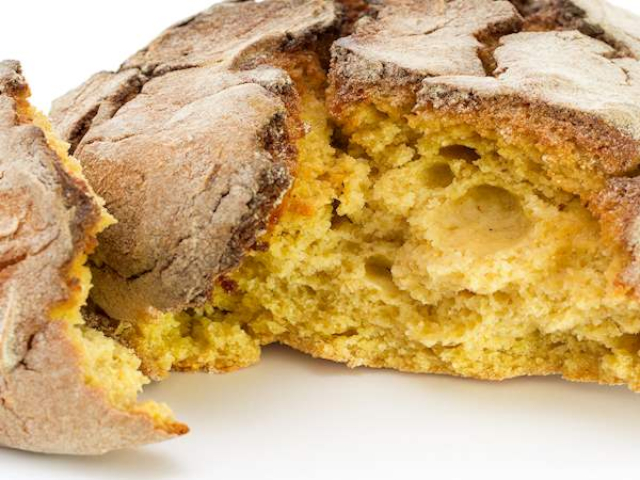 Broa de Milho: An everyday, staple bread of Portugal.
Broa de Milho: An everyday, staple bread of Portugal.
‘Pure’ Breads
Papo-seco or Carcaça: Plain Bread Rolls. They’re usually Sandwich Bun-sized and are used for snacks, sandwiches, breakfast rolls and at meals top0 sop up soups and stews. Made si8mply from wheat flour, yeast, water and salt, they are the go-to bread in every Portuguese home.
Torrada: Toast. Torrada com manteiga is simply toast and butter – the way a majority of Portuguese start their day. Think, ‘Texas Toast’. It’s a more-or-less typical brioche loaf enriched with milk and lots of eggs.
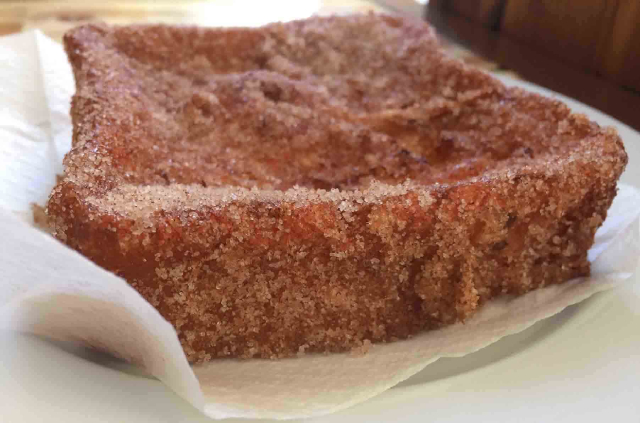
Also, think French Toast’, a presentation (see photo directly above) which is associated with the Christmas season. Dredged in sugar and cinnamon, it’s found at most Portuguese bakeries in the case where the cakes and other sweets are displayed.
Broa: Made of corn and rye flour, this is a sourdough bread that takes 6 -7 hours to ferment (rise). The dough won’t double like regular yeast bread dough, but it will become aerated and dome-up. You’ll also get significant oven spring! It comes out very crusty on top and very soft and dense inside. Broa is a traditional breakfast and luncheon accompaniment. Broa de Milho is similar, based largely on corn meal and rye flour, but it’s a yeast=raised loaf and ads butter sugar and milk to Broa’s minimalist recipe.
Bolo Levedo: Think ‘English Muffins’. They’re larger than their English cousins, though, and are popular at breakfast with sweet spreads, and as a base for sandwiches and snacks.
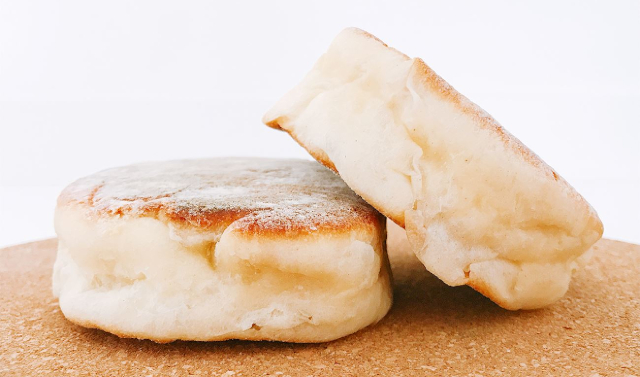
They’re very rich, made with flour, sugar, eggs, butter, water, milk, water and salt. They’re fried on a dry skillet (cast iron is ideal) or griddle, not baked.
Broa de Avintes: This is a dense, dark bread based on corn meal, rye flour and malt flour, and yeast, and has a distinctive ‘bittersweet’ flavour. It’s a staple in northern Portugal and is eaten at breakfast with butter and jam.
Bolo de Caco: This is the Portuguese version of Potato Bread, and a staple on the island of Madeira. It’s made from flour, sweet potatoes, yeast, water and salt. If you can’t get ‘white’ sweet potatoes, you can use regular spuds and a little sugar. Or let your Bolo de Caco turn out orange. You choice. It’s enjoyed with butter and garlic, as a base for sandwiches, and alongside many Portuguese main dishes.
Bread-based Mains and Snacks
Pão com Chouriço: The Portuguese version of Sausage Rolls. Sliced Chouriço (Chorizo) Sausage is kneaded into plain white bread dough, formed into rolls, and baked off at 320 F.
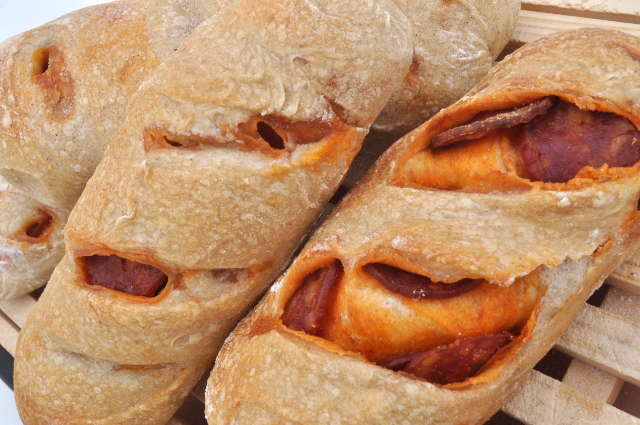
It’s a favourite snack, often enjoyed at ‘Lanche’, the ‘afternoon tea’ of Portugal.
Folar de Valpaços: Something you won’t see anywhere but Portugal, and usually at Easter. But it’s also enjoyed on other special occasions.
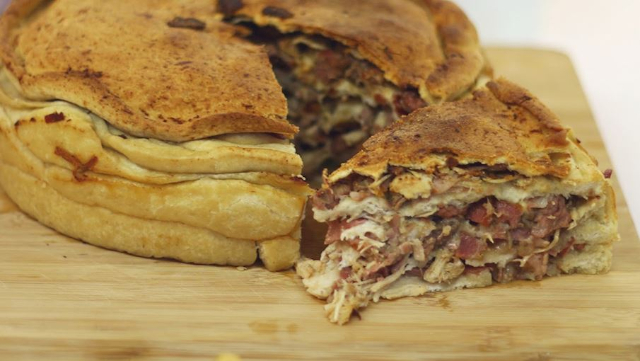
It’s layers of bread dough (featuring flour, eggs and olive oil) spaced by layers of a filling consisting of roast pork, bacon, sausages, ham, or shredded pork shoulder. This is less a bread and more a main.
Folar de Chaves: ‘Meat Bread’. This is a large, fluffy, tall brioche loaf, incorporating lots of eggs, butter and olive oil, is customarily stuffed with ham, sausages or bacon.

It’s another Easter favourite, a meal in a loaf. Folar de Chaves is bit fussy to make, but beloved by all.
Folar da Páscoa: Another brioche-style Easter bread, which may be prepared salty or sweet, and is distinguished by the hard-boiled egg baked into the top of the loaf.
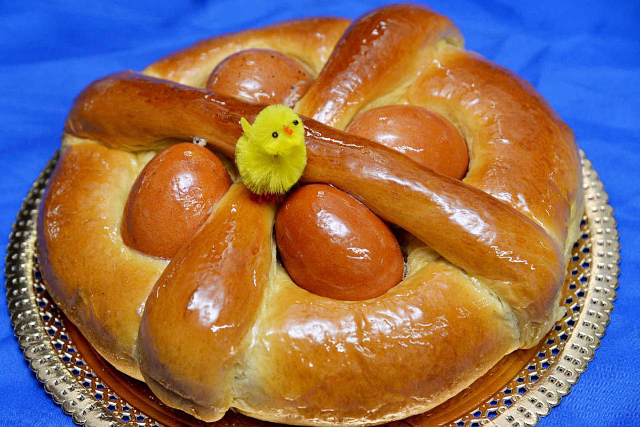
The egg represents rebirth (resurrection) – the essence of the Christian Easter Celebration – and friendship.
Merenda: A sweet brioche-style loaf served for breakfast or Lanche, stuffed with cheese and/or ham. Unlike other Portuguese stuffed breads, this one may also be made with puff pastry.
Bola de Carne: Yet another meat-stuffed specialty, but this time its a cake-like loaf. Traditional stuffings include ham or Chouriço, but may also include chicken or beef. It’s a Lanche-time favourite, but may turn up at any meal.
Time for Lanche!
Actually, anytime is snack time in Portugal! And they have an amazing number of hand and plated foods – many based on breads and rolls – to make yours memorable. Not to mention their almost infinite variety of daily breads. And bread-based deserts! We’ll have a look at the cream of those amazing creations tomorrow…
~ Maggie J.

